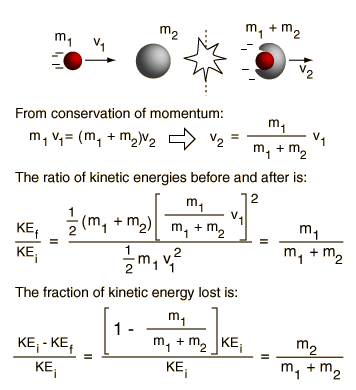austinwes
Practice Squad
- Joined
- Mar 20, 2005
- Messages
- 16
- Reaction score
- 7
Offline
In all processes, ideal or real, both momentum and energy are conserved, so says modern physics. The question is what form is the energy in and where does it go.You have to conserve momentum and energy in this problem, because an elastic collision, by definition, is one in which energy is conserved. Momentum is conserved in all ideal collisions.
As for the projectile problem, start with conservation of mass. Mp*Vp+Mt*Vt=(Mp+Mt)*Vboth because they are merged after the collision, thus thier velocities are the same. Vp is known, Vt is zero, thus you are left with one variable Vboth (the velocity of both after the collision) which you can solve for.
Then to find the kenetic energy transfered to the target, you know both its mass and velocity, so its 1/2MV^2. You know the kenetic energy of the projectile previous to the collision the same way. From there you can get the percentage.
Last edited:


